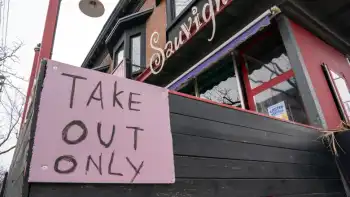Are wind farms damaging to your health?
In Ontario, the province has plans to increase the wind component of its electricity generation from the current 1 percent to 15 percent by 2025.
For the most part the wind energy industry has coasted along with favorable press and public opinion. The industry has had to weather some resistance, particularly pertaining to wildlife impacts (primarily birds and bats) and the consistency and reliability of wind power.
Yet these criticisms have not gained enough traction to have a noticeable effect on the growth of the industry, which is being hailed as a source of tens of thousands of potential new jobs in the evolving green economy.
Wind turbines emit inaudible sound waves in the low end of the sound spectrum and rhythmic vibrations caused by the spinning blades. These are suspected to cause a host of adverse health effects in some people that live in close proximity to the turbines, including:
• insomnia,
• headaches,
• acute hypertensive episodes,
• cardiac arrhythmia,
• heart palpitations,
• high blood pressure,
• the sensation of bugs crawling on the skin,
• humming in the head,
• continuous ringing in the ears,
• dizziness.
The condition has been given a name: "Wind Turbine Syndrome", coined by Dr. Nina Pierpont, the subject of her recently published 150-page book. Wind Concerns Ontario is a coalition of 32 individual anti-wind citizens' groups that have joined together from across the province of Ontario; they have named Wind Turbine Syndrome as one of their key focus areas.
Both Dr. Pierpont and Wind Concerns Ontario recommend a minimum 2 kilometer setback for wind turbines from residential homes, along the lines with what is recommended by the World Health Organization (1.5 kilometers).
The assignment of setback distances in Ontario is currently governed by municipalities (the province will be taking control under its new Green Energy Act) with most setbacks being under 500 meters. Given the mounting evidence indicating adverse effects that wind turbines can have on human health, it is critical that more research be conducted into adequate setback distances.
With the emphasis that the world is placing on wind energy as a critical piece of our future energy puzzle, setback distance research would be time and money well spent to ensure that wind power grows in harmony with the environment and its citizens.
Related News

New York State to investigate sites for offshore wind projects
NEW YORK - The New York State Energy Research and Development Authority (NYSERDA) is investing up to $5.5 million for the collection of geophysical and geotechnical data to determine future offshore wind development sites.
The funding is to look at seabed soil and geological data for the preliminary design and installation requirements for future offshore wind projects. Its part of N.Y. Gov. Andrew Cuomos plan to develop 9,000 megawatts of offshore wind energy by 2035.
Todays announcement is another step in Governor Cuomos steadfast march to achieving 9,000 megawatts of offshore wind by 2035, putting New York in a clear national leadership…




